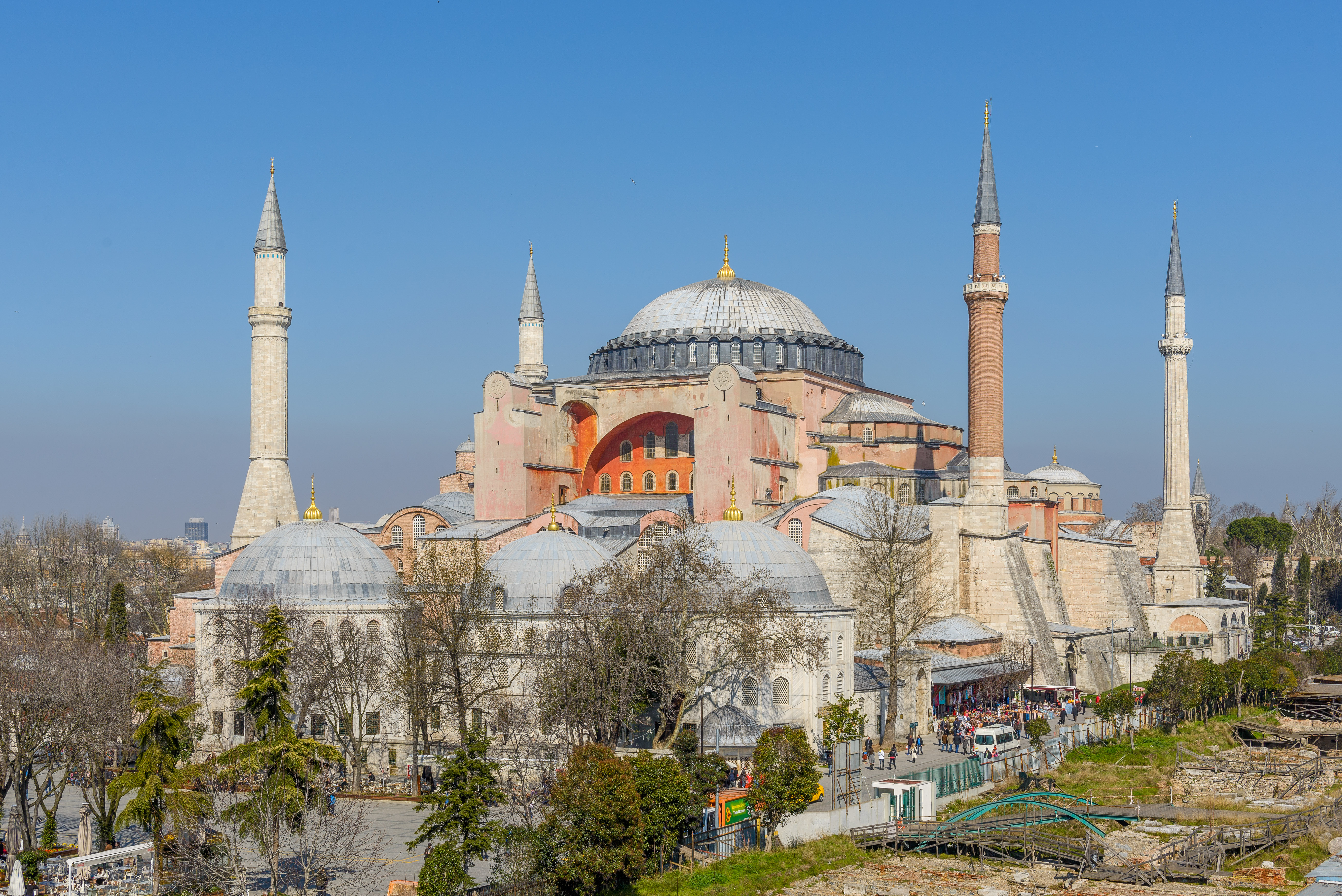Pursuit
of world exploration has increased with technological advance. The world is at
our fingertips and this common thread links all travelers through the expansion
of the global community. At Legendary Journeys we wish to take that thread and
weave a tapestry of experiences for any traveler to enjoy. From holy places for
the devout to worship to sunsets so full of majesty that manmade structures
cannot compete, we are dedicated to bringing people to the place their heart
desires most. Today we stop in on a city that has had more than one name
throughout its history, with complex and intriguing religious as well as
cultural history. Many cities count themselves as historically important for
being the cornerstone of one great empire, this city has been a part of two!
That city is Istanbul, Turkey!
Hagia Sophia is a former Christian patriarchal basilica and imperial mosque that now serves a museum. It was constructed in 537 AD and until 1453 it was used as a Greek Orthodox cathedral and was the seat to the Patriarch of Constantinople, except for a brief time in the 13th century when it was converted to a Roman Catholic cathedral under the influence of the Latin Empire. In 1453 it was converted to a mosque when the Ottomans took Constantinople and pillaged the now former church. It remained a mosque until 1935 when the first Turkish President and founder of the Republic of Turkey, Mustafa Kemal Atatürk, turned the building into a museum. It now serves as one of the greatest examples of Byzantine architecture that managed to survive its era, with its interior decorated with marble pillars and mosaics.
The Süleymaniye Mosque is an Ottoman imperial mosque located on the Third Hill of the city. The mosque is the biggest in the city, and it is one of the most revered spots in the entire city and a big tourist destination every year. It was built by the order of Sultan Süleyman (known as Süleyman the Magnificent) and it was considered a bit of a coup at the time to be able to have the architectural talents of Mimar Sinan to construct the building. The building took eight years to build and was completed in 1558. The building managed to blend both Islamic and Byzantine architectural elements to beautifully craft a religious monument. During its long history it has seen raging fires that have been restorations required and it was also used a weapons depot during World War I.
Dolmabahçe Palace served as the main administrative building of the Ottoman Empire from 1856 to 1922. The palace was ordered by the decree of the Empire's 21st Sultan, Abdülmecid I, and its construction began in 1843. The point of the new building was to have a more modern home for his family that was up to date as far as comfort, style, and luxury was concerned as compared to the residencies of the European monarchs. It is the largest palace in all of Turkey, covering over 11 acres of ground and containing 285 rooms, 6 baths, and 46 halls! The architecture of the building is nonconformist in nature as well, with many elements of Baroque, Rococo, and Neoclassical styles throughout the design with many touches of traditional Ottoman architecture blended in.
Istanbul's history is staggering in its breadth and complexity. From the Roman beginnings to its height as the jewel of the Ottoman Empire, the city has gone endured much but still stands proud as a testament to the spirit of its people. Want to visit here yourself? We can help you out! For all of the information on an amazing trip to this great city, click here.


No comments:
Post a Comment